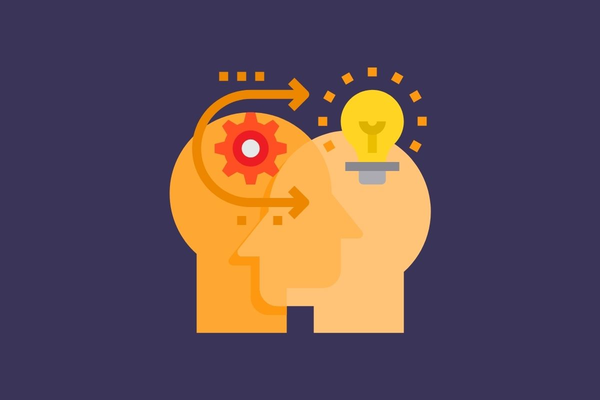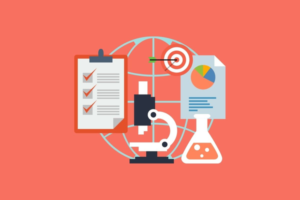If you are familiar with the Extended DISC® assessment, you will notice that results are displayed in two different profile graphs. These graphs are called your Natural and Adapted graphs, and they provide crucial information about who you are naturally and the style to which you may be adjusting.
DISC assessment tools that have one graph are only providing half the picture of your behaviour. If your DISC report only includes your natural profile graph, you are not getting the full scope of information related to your behaviour.
What Does Natural and Adapted Mean?
The DISC Profile graphs are a visual representation of your personality profile type. They are based on your responses to the online questionnaire. They are calculated using your “most” and “least” selections into a frequency distribution of each of the behavioural styles – D, I, S and C.
Your natural graph, also known as Profile II, demonstrates your natural behaviour. This is your most natural behavioural style which takes the least amount of energy and effort to exhibit. Your natural style or unconscious behaviour remains reasonably stable but not rigid over your lifetime. It is the style that is more comfortable for you and uses the least energy. Profile II is shown on the right in the image opposite.
Your adapted graph, also known as Profile I, illustrates how you are adapting your behaviour to your current environment at the time of assessment. Your adjusted style, or conscious behaviour, shows how you feel you need to adjust to meet the demands of your present environment. If flexing out of your natural behavioural zones, you may consume more energy to display this type of behaviour. Profile I is shown on the left in the opposite image.
To summarise, natural vs. adapted styles. Your natural style is how you behave when you are not consciously thinking about your behaviour. You are exhibiting your most authentic self. Your adapted style is what you present when you are consciously thinking about how you are behaving and how it impacts others. Consciously thinking about your behaviour may result in making either a small or large adjustment depending on your current situation.
What is an Adapted DISC Profile?
An adapted DISC profile illustrates how a person feels they need to adjust their behaviour to better cope with the requirements of the current environment. The adapted profile demonstrates the individual’s conscious understanding of one’s self and own behaviour in the present situation. It is their conscious self-image. If you are making a large adjustment between your natural and adapted styles, your energy consumption, focus and effort required to make that adjustment increases. Your adapted DISC profile is much more likely to shift each time you re-take the DISC questionnaire.
What is a Natural DISC Profile?
A natural DISC profile illustrates a person’s natural DISC personality type. The natural DISC profile encompasses your response to an external stimulus. It is a behavioural style that takes the least energy and effort, requires the least amount of concentration, and is usually the most pleasant to the individual. It illustrates the reaction mode that the person uses to naturally react and is most frequently exhibited outwardly in one’s behaviour. Profile II, your natural DISC profile, is the Extended DISC® System’s most accurate and lasting illustration of a person’s natural behaviour. Any significant and large changes in your natural profile usually indicate significant events and changes in the individual’s immediate environment may be forcing them to seek new ways to succeed.
Comparing Your Adapted and Natural DISC Profile
By comparing your adapted and natural DISC profiles, you can uncover important information about your behaviour. The main focus of the analysis is to underline any significant adaptations, which may need to be addressed.
There are two ways in which we adapt our styles:
- Reactively
- Strategically
Reactively
An employee adapting reactively may be making an unconscious response to the work environment, job constraints, or expectations.
Strategically
An employee making a strategic adjustment may be consciously altering their natural behavioural patterns to fit their perceived job requirements.
As we know, adapting your style from your natural style can consume large amounts of energy. While we can adjust our style for short periods of time, adjusting on a long-term basis may indicate feelings of stress or pressure.
When making a large adjustment between your natural and adapted styles, the greater the energy consumption you will require to make that adjustment. The profiles will illustrate a large adjustment through a significant difference between the shapes of the profiles. If you are only making a small adjustment or no adjustment at the time of assessment, your natural and adjusted profiles will be very similar. This situation may indicate that you are in a role that suits your style well and means you do not feel you need to adjust to be effective in your current environment.
For example, if you are a DISC profile type with a dominant D style and secondary C style, you might be able to emphasise your C characteristics with little to no effort. However, if you adapt far from your natural style to an I style, you will likely consume significant amounts of energy. If you are making this adjustment for long periods, you may start to notice yourself under significant stress or pressure.
When comparing your adapted and natural DISC profile, look out for differences such as:
- A change in the basic shape of the profile
- Shifting of a behavioural type (D,I,S,C) over and under the Middle Line
- A change in the dominating type (D,I,S,C)
- An increase or decrease in the percentages
The natural and adapted graphs are crucial to an employer’s understanding of an individual’s behaviour. By learning how a person adapts to situations, like a job position out of their comfort zone, and comparing that with their natural behavioural style, you can avoid bad hires, create development plans, provide additional training and support, and better structure job responsibilities.
The natural and adapted profile graphs help you see who someone really is, and who they can be if needed. These insights allow for more educated decisions in the workplace.




